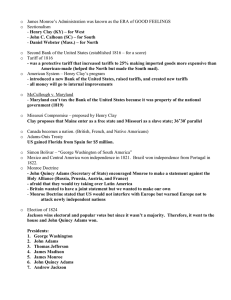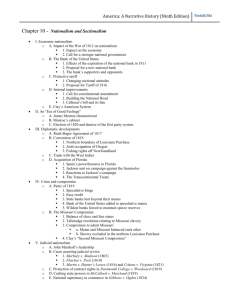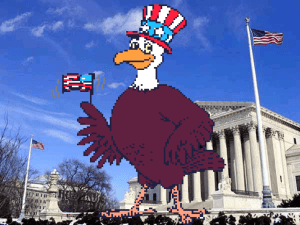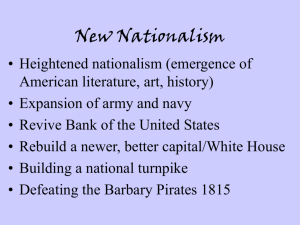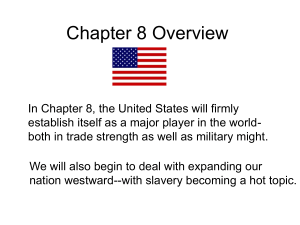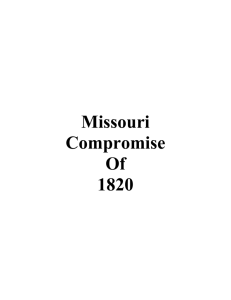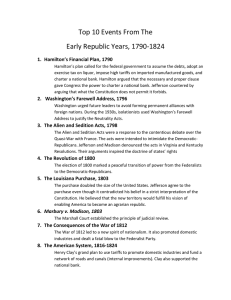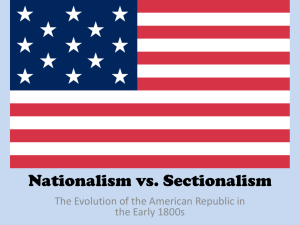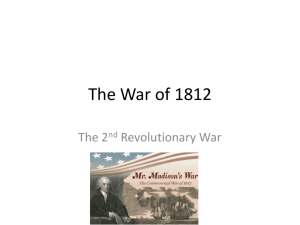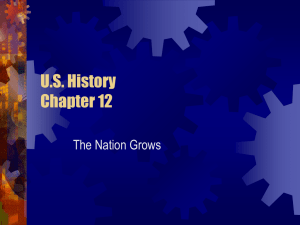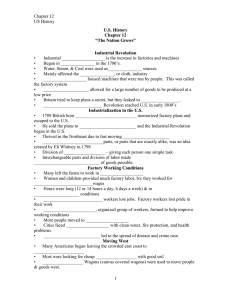Monroe Doctrine - Warren County Schools
advertisement
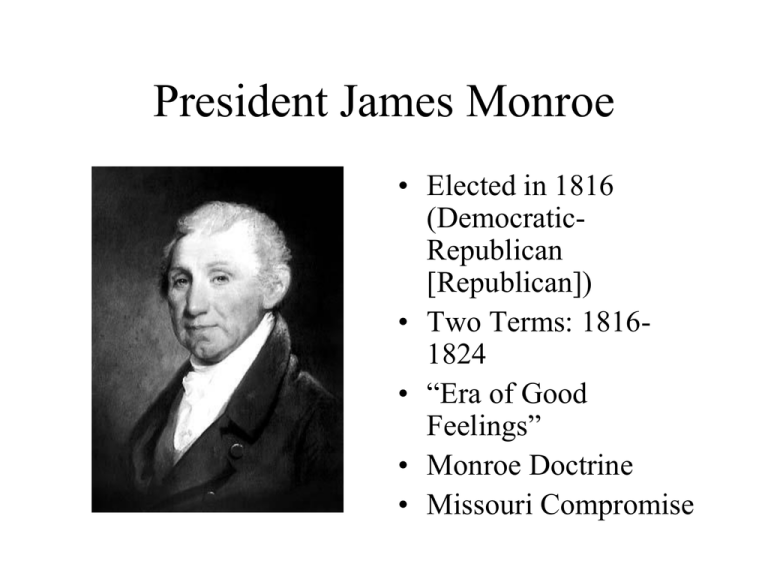
President James Monroe • Elected in 1816 (DemocraticRepublican [Republican]) • Two Terms: 18161824 • “Era of Good Feelings” • Monroe Doctrine • Missouri Compromise John Quincy Adams • Monroe’s Secretary of State • Architect of the Monroe Doctrine • Wide experience in international politics • Brilliant thinker and politician • Son of 2nd president, John Adams and future president (1824-1828) “Treaties” w/ John Quincy Adams • 1817 - Rush-Bagot Agreement – Limited naval armament on Great Lakes – Established unfortified boundary with Canada • 1818 - British American Convention – Established the US-Canadian border along the 49th parallel – Signaled better relations with the British and British Canada • 1819 - Adams-Onis Treaty (Florida Land Purchase) – Andrew Jackson attacked raiders from Florida – Spain ceded Florida to the US – Western boundary w/ Spain settled (New Spain) – Spain nearly done as a colonial power – Mexican Revolution of 1821 would oust Spanish rule and establish Mexican independence. The Monroe Doctrine • 1823 (Sec. Of State John Quincy Adams) • No more European colonization in Western Hemisphere • US dominance of Western Hemisphere established Implications in the Western Hemisphere • US dominance until the present • US role in Latin American affairs • European direct influence limited Nationalism (Cultural and Political) and the Era of Good Feelings • Star-Spangled Banner (1814 Francis Scott Key) • Basically a one-party system (Democratic-Republicans) • Solidified American expansion and borders • Secured US as a respected nation • Growth of a national economy • Webster’s school speller • Various paintings of Revolutionary War heroes, etc. Economic Nationalism • Tariff of 1816 - high tariff rates to protect US industry • American System proposed by Henry Clay • Panic of 1819 – 2nd Bank of US (BUS) tighter money supply – State banks closed = money deflated (lost value) – Hardest hit was the WEST – Changed politics • Political changes as a result of economic changes: – Changes in old Republican Party (Jefferson’s DemocraticRepublicans) – Federalist party = Dead – Splits emerge in (Jeffersonian) Republican party based on regional differences Evolution of Major Parties The American System (Henry Clay) • Henry Clay proposed an “American System” which called for: – Protective tariffs – National bank – Internal (transportation and infrastructural improvements •Not a formal ‘document’ or plan •Tariff and bank were in place. •National leaders differed on the spending of federal money on road-building and other improvements Missouri Statehood • Missouri - applied for statehood in 1819 • Balance of free and slave states in question • Tallmadge Amendment limited attempt to eliminate slaves in MO angered southern states • Henry Clay (Kentucky) proposed a compromise: • 1. MO Admitted as a slaveholding state • 2. Maine Admitted as a free state • Louisiana Territory north of 36˚ 30’ N slavery prohibited • Monroe signed in 1820 Map 12.4: The Missouri Compromise and Slavery, 18201821 Map 8.3: The Missouri Compromise, 1820–1821 12 Map 9.3 The Missouri Compromise, 1820–1821 (p. 272) The Missouri Compromise
